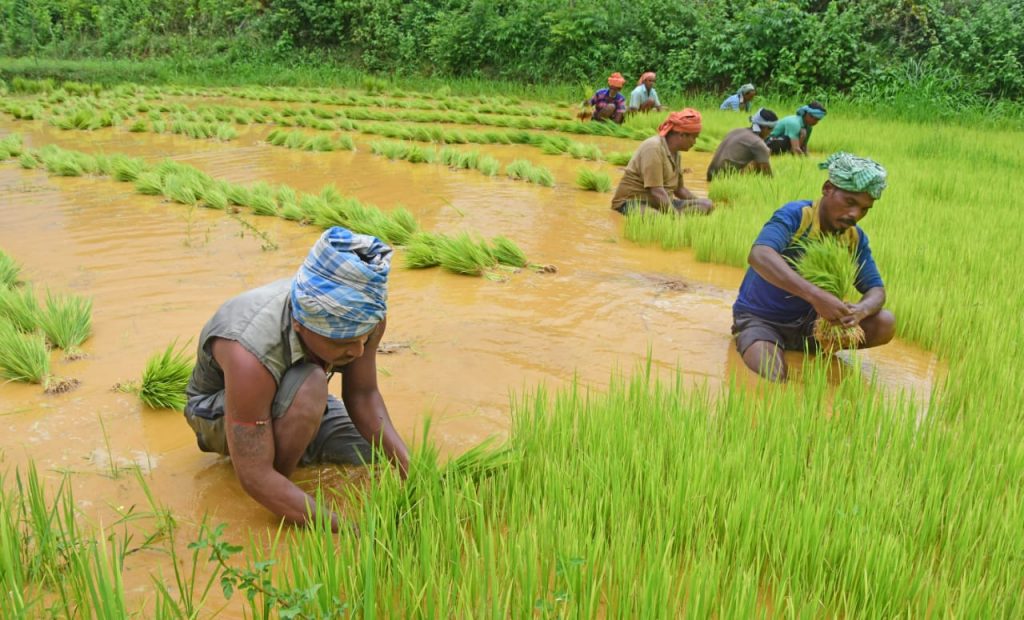Kamal Baruah
Agriculture is the primary source of livelihood for over 60 per cent of the population. Farmers here suffer more in marketing their produces than in raising their crops or harvesting them season after season. Markets are not farmer-friendly. Will the new farm legislation help farmers get a fair price for their produce? This remains to be seen.
Notably, India started facing severe shortages of food material during World War II. The Essential Commodities Act (ECA) was enacted in 1955 to regulate the production, supply and distribution in order to make food grains and cereals available to consumers at fair prices. The nation went through severe droughts in 1965-66, which led to import food grains. We overcame such grim situations by ushering in a Green Revolution under the guidance of agriculture scientist MS Swaminathan. By now, the Indian food and grocery market is the world’s sixth largest. The nation produces 298 MT of foodgrains. India also has the largest livestock population –some 31 per cent of the world total.
While farming plays a vital role in India’s economy, the irony is that when there is a glut in production of vegetables and crops, there is a shortage of the same in the market. Prices shoot up due to severe supply shortages. Profiteers and black-marketers take advantage of the government’s failure to intervene. Farmers switch to new crops due to hardships, uncertainties of pestilence and low yields. Bio-engineered seed varieties are susceptible to virus attacks. Indifferent weather conditions spoil their Rabi crops; but rain is good for Kharif crops.
India has the largest population of hungry people in the world even as there is abundant food production. India is among the 15 leading exporters of agricultural products. But there is a flipside to this great Indian agriculture story. Food grains are rotting in the warehouse. It’s time to accord priority to addressing the causes of food storage and problems in distribution. It’s a huge paradox that Indian farmers are poor in a food-rich India.
The local administrations try to control or keep low the food prices to satisfy the urban population at the cost of farmers’ interests. In the name of subsidies for fertilizers and free power, the governments help well-off farmers instead of the ordinary ones who form some 80 per cent of the farming community. As Mahatma Gandhi said, India lives in its villages. All- weather roads still do not connect rural habitations with cities. Lack of cold storages and transport facility, inadequate post-harvest safeguards, bias in procurement policy and inadequate food processing avenues have all resulted in huge waste of food.
The Agricultural bills2020 promote intra/inter-state trade of farmers’ produce beyond the physical premises of APMC (agricultural produce market committee)and MSP (minimum support price) andalso facilitateelectronic trading e-NAM (The Electronic National Agriculture Market). E-NAM was launched to create a unified national market for agricultural commodities by networking with the existing APMCs. It has 16.6million farmers and131,000 traders registered on its platform wherein some 1,000 mandis are already linked. The state governments are prohibited from levying any fee on farmers, traders, and e-trading platforms.
The bills empower farmers to protect contract farming under a three-level dispute settlement mechanism. The new law stipulates that stock limit on agricultural produce must be linked to prices. Essential Commodities (Amendment) Act now allows regulating the supply of certain food items only under extraordinary circumstances. The government also allowed 100 per cent FDI in marketing for food products on E-commerce platforms. The government says the reforms will help farmers get connected to big traders and exporters, thereby bringing them more of profits. Another promise is that the new law will rid farmers and the farm sector of middlemen and other bottlenecks. Yet, farmers have their apprehensions as to what fate awaited them.
Farmers in Punjab and Haryana are up in arms against the law, saying this would hit the functioning of APMC. Ironically, middlemen run the show by buying farmers’ produce in mandis/local bazar at prices even below the MSP, and take high commission. Poor farmers have no choice. Investment in agricultural infrastructure such as warehouses and cold storages is likely to improve the lot of Indian farmers.
